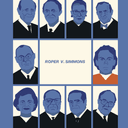
In a 2022 article published in the Idaho Journal of Critical Legal Studies, author Sidney Balman (pictured), examines the relationship between racism and geographical arbitrariness in the application of the death penalty in the U.S. As in other areas of society, he finds that Black lives are not valued equally with others. He cites the Supreme Court’s decision in McCleskey v. Kemp (1987) as the main legal obstacle to reversing this bias affecting capital punishment. “Today,” he writes, “McCleskey has come to stand for the Court’s refusal to address the racially disparate imposition of death across the nation.”
When examining the geographical disparities found in the application of the death penalty, the author argues that the bulk of cases is “largely controlled by a handful of county prosecutors,” and that the imbalance is getting worse. He concludes that “the overlap between racism and geography is not just a coincidence.”
The author offers two possible responses to these interrelated problems: “One I refer to as ‘McCleskey Plus’ because it does what the Supreme Court failed to do in 1987. Here I argue for the implementation of racial justice acts that recognize race discrimination in the imposition of death without requiring a showing of purposeful discrimination. The second possible response takes the BLM (Black Lives Matter) movement to the next level, moving past demands to ‘defund the police’ to a compelling, clear message: ‘defund the death penalty.’”
Sidney Balman, Ensuring Black Lives Matter When the Penalty Is Death, 15 Idaho Critical Legal Stud. J. 1 (2022).



